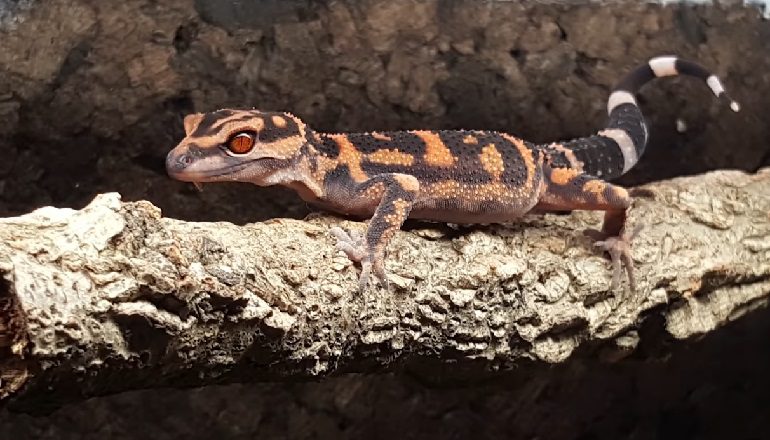Geckos are a widespread and diverse group of small lizards found in tropical and subtropical regions around the world. Their sleeping and activity patterns have long fascinated researchers and gecko enthusiasts alike. So are geckos nocturnal or diurnal? The answer is not so straightforward, as different gecko species exhibit different circadian rhythms.
The Sleep-Wake Cycles of Geckos
Many gecko species are nocturnal, meaning they are most active at night. Nocturnal geckos like the common house gecko and Tokay gecko sleep during the day and become lively at dusk when they go hunting for insects. Their large eyes with vertical pupils and excellent night vision adaptations allow them to navigate and hunt in dim light. Being active at night likely helps these geckos avoid daytime predators and regulate their body temperature, as many live in hot climates.
However, not all geckos are nocturnal. Some species are diurnal, or most active during the daytime. Examples include the aptly named day geckos of the genus Phelsuma, as well as the popular leopard and crested geckos. These geckos sleep at night and wake up to bask and feed during the day. Their eye adaptations suit their daytime lifestyle.
Other geckos are cathemeral, exhibiting sporadic activity both night and day. They may be responding to changing temperature, humidity, or prey availability. The giant leaf-tailed gecko of Madagascar is one cathemeral species.
Factors Influencing Gecko Sleep-Wake Cycles
Gecko species’ sleeping and waking patterns depend on a complex interplay of environmental factors. These include:
- Prey availability: Nocturnal geckos are attuned to the schedules of nocturnal insects like moths and roaches. Diurnal geckos align with daytime insects.
- Risk of predation: Being active at night when fewer predators are alert improves survival for some species.
- Climate: In hot deserts, nocturnal activity helps geckos avoid deadly daytime heat. Some rainforest geckos are diurnal to coordinate activity with the peak of insect activity in their habitat.
- Temperature regulation: Nocturnality allows geckos to stay cool. Diurnality enables basking and regulation of body temperature.
- Competition: Different activity patterns reduce competition between coexisting gecko species.
- Phylogeny: Closely related gecko species tend to have similar activity patterns, suggesting an evolutionary basis.
The Flexibility of Gecko Sleep Cycles

While many geckos show fairly consistent daily rhythms, their sleep-wake cycles remain flexible. Some key examples:
- Young geckos may switch from nocturnal to diurnal as they age.
- Reproductive condition influences activity, with males more active when seeking mates.
- Temperature extremes may cause geckos to shift their active hours.
- Captive geckos often show altered rhythms from wild counterparts due to factors like lighting, food availability, and lack of predators.
So gecko sleep and activity patterns can vary within a species based on intrinsic and environmental factors. Their flexibility likely assists adaptation to local conditions.
Conclusion
To summarize, gecko sleep-wake cycles are diverse and influenced by many variables. While many geckos are nocturnal, others are diurnal or crepuscular. Determining a gecko species’ typical daily activity patterns requires researching its natural history and considering how factors like climate, prey availability, and competition shape its rhythms. However, flexibility remains the norm, enabling geckos to adjust to changing conditions. Understanding gecko circadian biology provides insight into their evolutionary adaptations and roles in delicate ecosystems.
FAQs
How can I determine if my pet gecko is nocturnal or diurnal?
You can often determine your pet gecko’s activity pattern by observing its behavior. Nocturnal geckos are typically active at night, displaying increased movement, hunting, and feeding behaviors. Diurnal geckos, on the other hand, are active during the day, basking and exploring their enclosure when the lights are on.
Do geckos exhibit any behaviors that indicate their activity patterns?
Yes, geckos exhibit specific behaviors that reflect their activity patterns. Nocturnal geckos may become more active and feed during the evening, while diurnal geckos are often seen basking under heat lamps or actively exploring their habitat during daylight hours.
What are the advantages of having a nocturnal gecko as a pet?
Owning a nocturnal gecko can be advantageous because they are typically more active and visible during evening hours, making it easier for pet owners to observe and interact with them. This can lead to a more engaging and enjoyable pet ownership experience.
Do diurnal geckos require different lighting setups in their enclosure?
Yes, diurnal geckos often require specific lighting setups in their enclosure. They benefit from full-spectrum UVB lighting to simulate natural sunlight, which aids in their calcium metabolism and overall health. Proper lighting is essential for diurnal geckos to thrive in captivity.
Can geckos’ activity patterns change with age or health?
Geckos’ activity patterns can change with age or health. Young geckos may be more active than older ones, and health issues can affect their activity levels. Stress, illness, or environmental changes may also temporarily alter their behavior. Monitoring their well-being is crucial for maintaining their health and activity levels.



